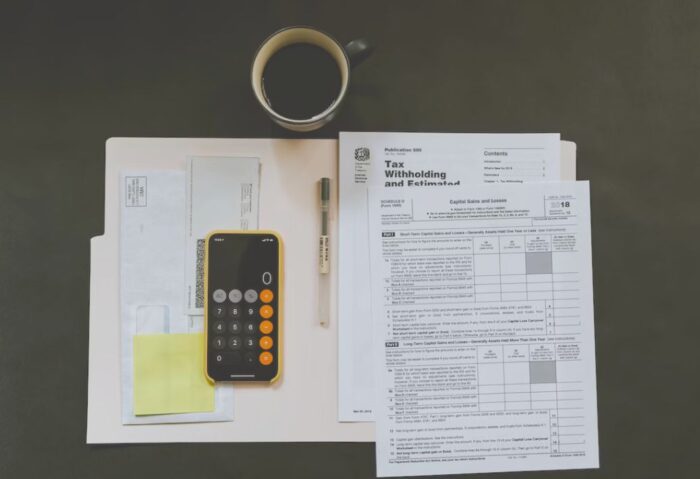06 Jul Intellectual Property Checklist

 Authors: Ian Aldridge & Zeinab Farhat, Progressive Legal
Authors: Ian Aldridge & Zeinab Farhat, Progressive Legal

Need a downloadable version of our IP Checklist?
Click the button below to download our IP Checklist as a PDF.
DOWNLOAD PDFIntroduction
Progressive Legal® is on a mission to help Australian businesses and their owners with securing their Intellectual Property (IP) in a way that will ensure they can protect their brand, enforce their legal rights should they need to, learn more about the various IP they have in their business and understand how valuable it is for a business.
The problem we identified is that there’s no checklist out there for a business to know what they should consider when it comes to their IP. Until now…
Why is IP important?
We’ve created this checklist as a practical guide to assist businesses as IP is increasing in its value for most businesses and it’s becoming far more important than ever to take proper and reasonable steps to protect it. This is largely attributable to the advancement of technology and increase in globalisation. Many businesses are not sufficiently aware and are surprised how much valuable IP they have made when we advise them, and which has accumulated over the years.
What this checklist will cover
This checklist will:
1. increase your awareness as to how much IP you have in your business;
2. allow you to consider whether all the major boxes have been ticked;
3. provide guidance on whether there are other forms of IP you should obtain or move to register to protect; and
4. if your business legal structure has changed, have you considered whether some IP would need to be transferred in the right legal entity for it to be enforceable.
Finally, if the owners of the business would eventually consider selling at any stage or hand-on to future generations? If so, have you got your house in order? All of this should be legally neat and tidy, and all steps taken to protect the IP of the business. If not, it can potentially be fatal.
We have seen prospective purchasers balk at buying certain businesses where this has not been done, as they know how dangerous it is for a business not to have all this done because of the costly consequences that can result, which they would have seen. Opportunities have been missed as a result!
Step 1: Identifying your Intellectual Property (IP)
In order to consider what IP assets the business owns, you must first identify what types of Intellectual Property you currently have in your business (IP Inventory).
You’ll be surprised just how much IP exists in your business!
Type of IP |
Have you identified any of this IP in your business? |
Trade marks
|
A trade mark is a badge of origin for your business, it can consist of a logo, letter, word, phrase, sound, movement, shape, scent, or colour. Examples of trade marks include:
|
Domain name and other social media accounts
|
|
Copyright
|
Copyright protects original works and grants the owner the exclusive right to do specific acts for a set period of time. Examples of copyright works include:
With all the above content, we suggest you mark any of these documents with: “© Your Company Name – Year – All legal rights reserved”. |
Trade Secrets |
Trade secrets protect confidential information which may be of value. Examples of trade secrets include:
Essentially, these are the “secret sauces” for your organisation. You wouldn’t want them to be disclosed (which you would need to do for a patent) and you wouldn’t want your competitors to get their hands on them. For example, pricing or formulas which you’ve worked hard to develop over time. The recipe for Worcestershire sauce or Coca Cola are good examples. They’ve never been disclosed and are held under lock and 2 separate keys! |
Patents
|
A patent gives the owner the right to stop other people from using or selling an invention, substance, method or process for a limited period of time. Examples of patents include:
|
Designs
|
A design protects the overall visual appearance of a new and distinctive product. Designs protect the appearance of a product, rather than how they function. This includes:
|
Need intellectual property advice tailored to your business?
Contact Progressive Legal for expert IP advice from our experienced IP lawyers.
REQUEST OUR ADVICEStep 2: Protecting your Intellectual Property
After you’ve identified the extent of your IP inventory, it’s essential that you consider the commercial/ legal risks which exist and any active steps you should be taking to protect it. This includes risks that exist either internally, with 3rd parties you engage and of course – your competition in the market you operate in.
The protection of your IP is a long process and begins from the moment you expend effort on creating your idea to the actual manifestation of that idea in physical form.
Registration of intellectual property in Australia
Trade marks: Have you registered your trade mark(s) with IP Australia? Find our trade mark registration service here.
Copyright: You do not need to register Copyright in Australia. Copyright is automatically recognised under the Copyright Act 1968 (Cth) (subject to satisfying the requirements of subsistence).
Designs: Have you registered your Design(s) with IP Australia? Our experienced registered design lawyers can help you do this.
Patents: Have you registered your Patent(s) with IP Australia? For more information about patent advice, click here.
Unregistered trade mark(s)
If you have an unregistered trade mark, you still have protection to stop other people from using it (i.e. under the common law of passing off, or pursuant to the Australian Consumer Law for misleading and deceptive conduct).
Trade mark and copyright notices
Do you use the symbol ™ for unregistered trade marks?
Do you use the symbol ® to show your trade mark is registered?
Here is an article if you want more information.
Ownership of intellectual property in Australia
Do you document your right to use IP works?
Do you document drafts and initial plans of your IP works?
Is the IP being used wholly owned by your company?
Do you require all employees and contractors to sign agreements which assign all IP rights to your company which they have developed while they are working for you?
Do you know under what name your social media accounts and domains are held in?
Where employment ends, do you conduct exit interviews with employees with respect to any IP issues (such as the return of company property, trade secrets etc)?
Has all IP which has been created externally (i.e. by contractors) been formally assigned to your company?
Corporate structure
If there is a group of companies, is your IP owned by the correct entity?
If you have a holding company and trading entity, is the IP held in the former, whilst the latter has a license to use it?
If you have moved to a new business structure, has the IP been moved to the new structure?
Is the IP co-owned (either between parties or entities)? If so, have you considered the implications of this?
Enforcement of rights
Where you are made aware that an infringement of your IP has occurred, do you send cease and desist / letters of demand to the infringing party putting them on notice of your rights?
Do you obtain legal advice regarding suspected infringements of your IP?
Use of confidential information
Do you have any processes or procedures in place to prevent the unauthorised disclosure of your business’s ideas or concepts?
Do you have Confidentiality Agreements/Deeds, or Non-Disclosure Agreements with your employees, contractors and other third parties?
Licenses
If another party is found to infringe an IP right that you have licensed, have you considered whether you or the licensee will pay any legal costs associated with dealing with the matter?
Documents
Have you identified all agreements you or your company may have with a third party? This includes and is not limited to:
- license agreements;
- assignment agreements;
- distribution agreements;
- non-disclosure agreements; and
- non-competition agreements.
Have you identified other documents relating to Intellectual Property rights? This includes and is not limited to:
- contracts with suppliers; and
- contracts with customers (including terms and conditions etc).
After reviewing the documentation, does each agreement identify:
- The parties to the agreement?
- The true owner of any IP developed under the agreement?; and
- The rights being transferred?
Step 3: Avoiding the infringement of others’ IP rights
Just as it’s important to protect your own Intellectual Property rights, it is also essential that you take active steps to prevent the potential infringement of third parties Intellectual Property rights, so as to limit your legal liability.
Identification of competitors
Do you have any processes by which you identify potential competitors in the market and the likelihood of infringing their IP rights?
Before you create your Intellectual Property, do you conduct a thorough review of any registered IP which you may potentially be infringing upon (such as trade mark searches on IP Australia)?
If you plan on selling your product/ services internationally, have you conducted the same review for the countries you intend to export your products or services to?
Due diligence
If you are purchasing a business, have you conducted your due diligence to ensure that the IP being used is not infringing a third parties rights?
Licences with third parties when using third party Intellectual Property in Australia
Do you have any licenses which allow you to use another parties IP? If so, are you across the terms of that license and how the IP can be used?
Do your licenses which allow another party to use your IP include indemnities against any tort or liability claims?
Use of hyperlinks
Are you sure that your online content (such as social media pages or website) does not link to or embed material which infringes copyright?
Seeking advice from legal professionals
Do you seek advice from any lawyers or Intellectual Property professionals as to your Intellectual Property matters?
If you require legal advice in relation to your Intellectual Property or your business more broadly, the team at Progressive Legal are experts in the field.
Feel free to call our office at 1800 820 083 or request our advice below to fill out our online enquiry form.
Need intellectual property advice tailored to your business?
Contact us by giving us a call on 1800 820 083 or request our advice today.
REQUEST OUR ADVICEContact Us
Need Legal Help
If you are seeking expert intellectual property advice, turn to Progressive Legal.
Find out how we can help or please complete the form above.
- 27 July, 2023
- 06 July, 2023

Ian Aldridge is the Founder and Principal Lawyer Director at Progressive Legal. He has over 15 years experience in advising businesses in Australia and the UK. After practising in commercial litigation for 12 years in major Australian and International Law Firms, he decided to set up a NewLaw law firm in Australia and assist growing Australian businesses. Since then, he has advised over 2,500 small businesses over the past 6 years alone in relation to Intellectual Property Law, Commercial, Dispute Resolution, Workplace and Privacy Law. He has strived to build a law firm that takes a different approach to providing legal services. A truly client-focused law firm, Ian has built Progressive Legal that strives to deliver on predictable costs, excellent communication and care for his clients. As a legal pioneer, Ian has truly changed the way legal services are being provided in Australia, by building Legal Shield™, a legal subscription to obtain tailored legal documents and advice in a front-loaded retainer package, a world-first. He has a double degree in Law (Hons) and Economics (with a marketing major). He was admitted to the Supreme Court of NSW in 2005.






